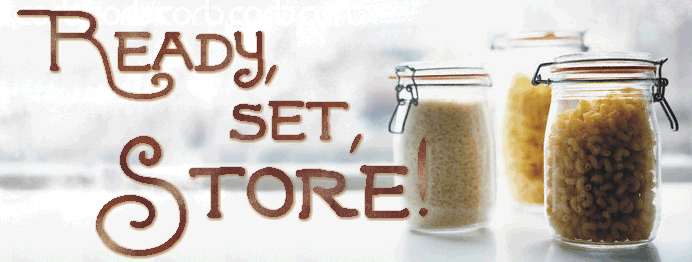
This has always been a concern of mine, thought I would pass on this info. :)
Protecting Your Food Storage
• Avoid heat and sunlight. Optimum temperatures are 70 degrees or cooler. Freezing should be avoided for wet-pack items. Storage at temperatures below freezing may be detrimental to the germination quality of some seeds.
• Protect against moisture. Food containers should not come in direct contact with concrete floors or walls. Instead, place them on shelves or raised platforms. If you live in a particularly humid climate, consider providing ventilation to avoid moisture buildup.
• Keep rodents and insects out. Instead of leaving dry goods in the original packaging, consider storing them in number 10 cans, foil pouches, glass canning jars, PETE (polyethylene terephthalate) plastic bottles, and plastic buckets.
• Rotate. Generally, wet-pack items can be kept for two to three years. Dry-pack goods have varying “best if used by” recommendations. Referring to a retail product’s label, which usually includes a company’s toll-free number, can also help you decide how soon products should be rotated.

No comments:
Post a Comment